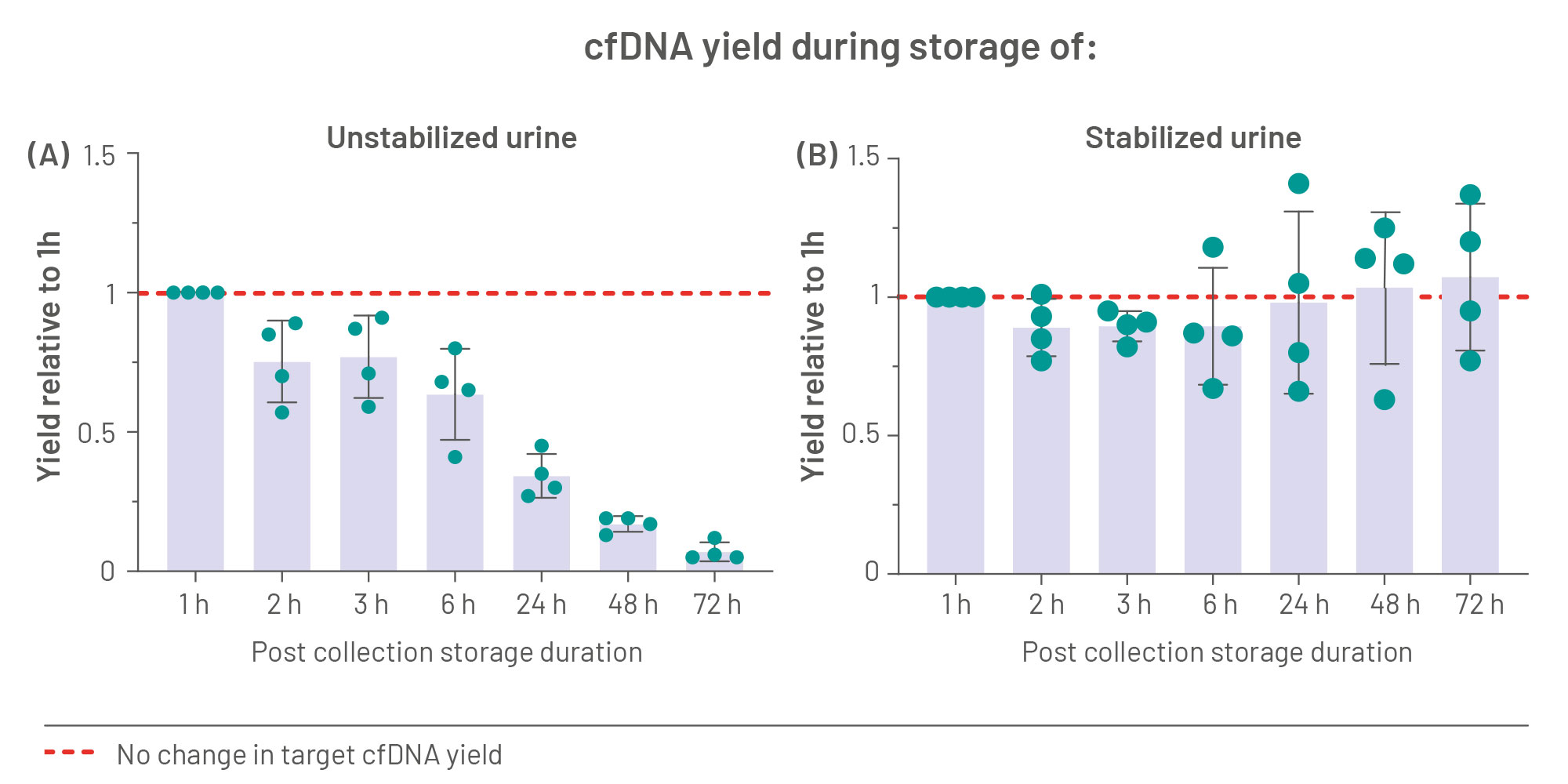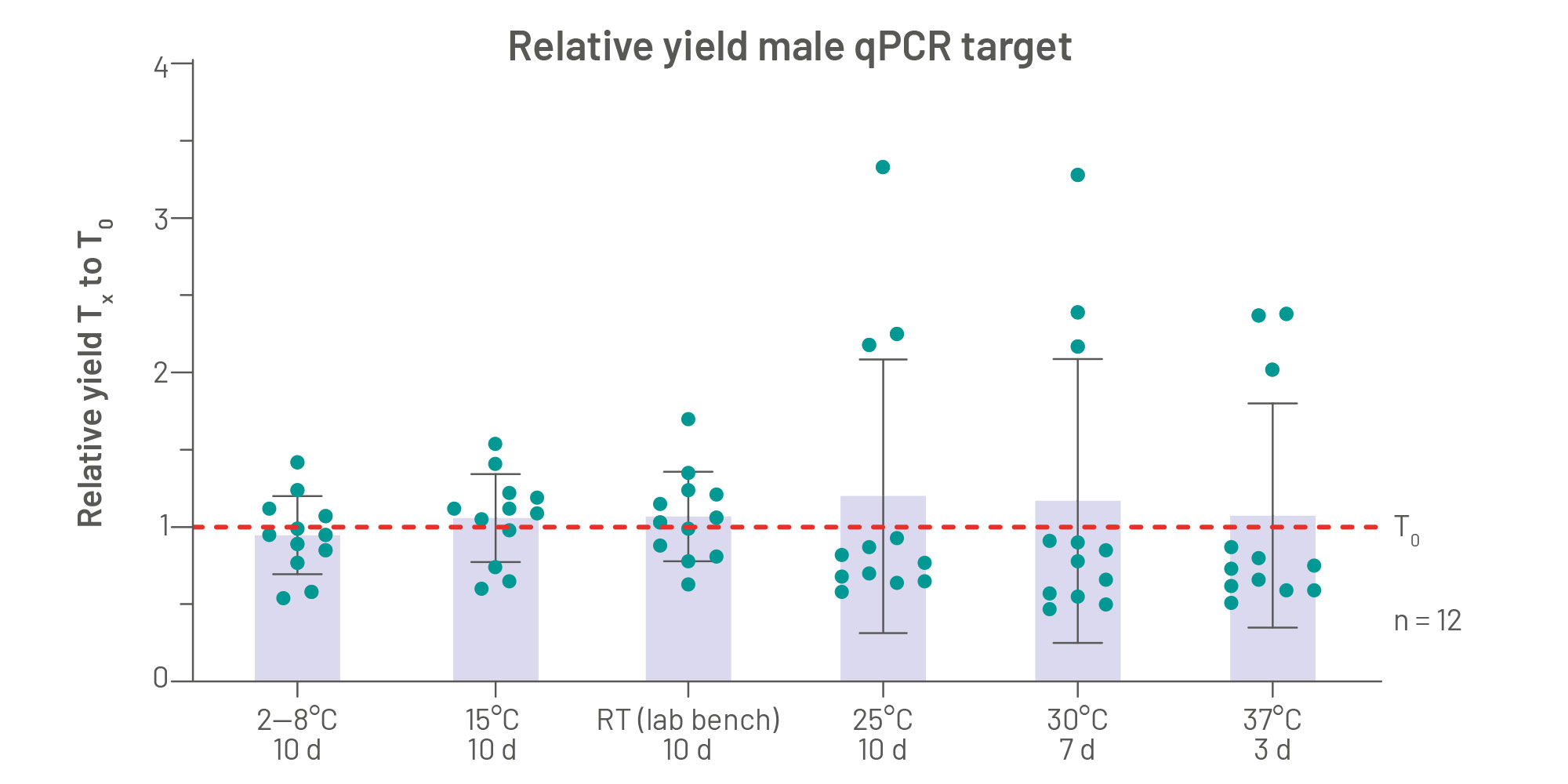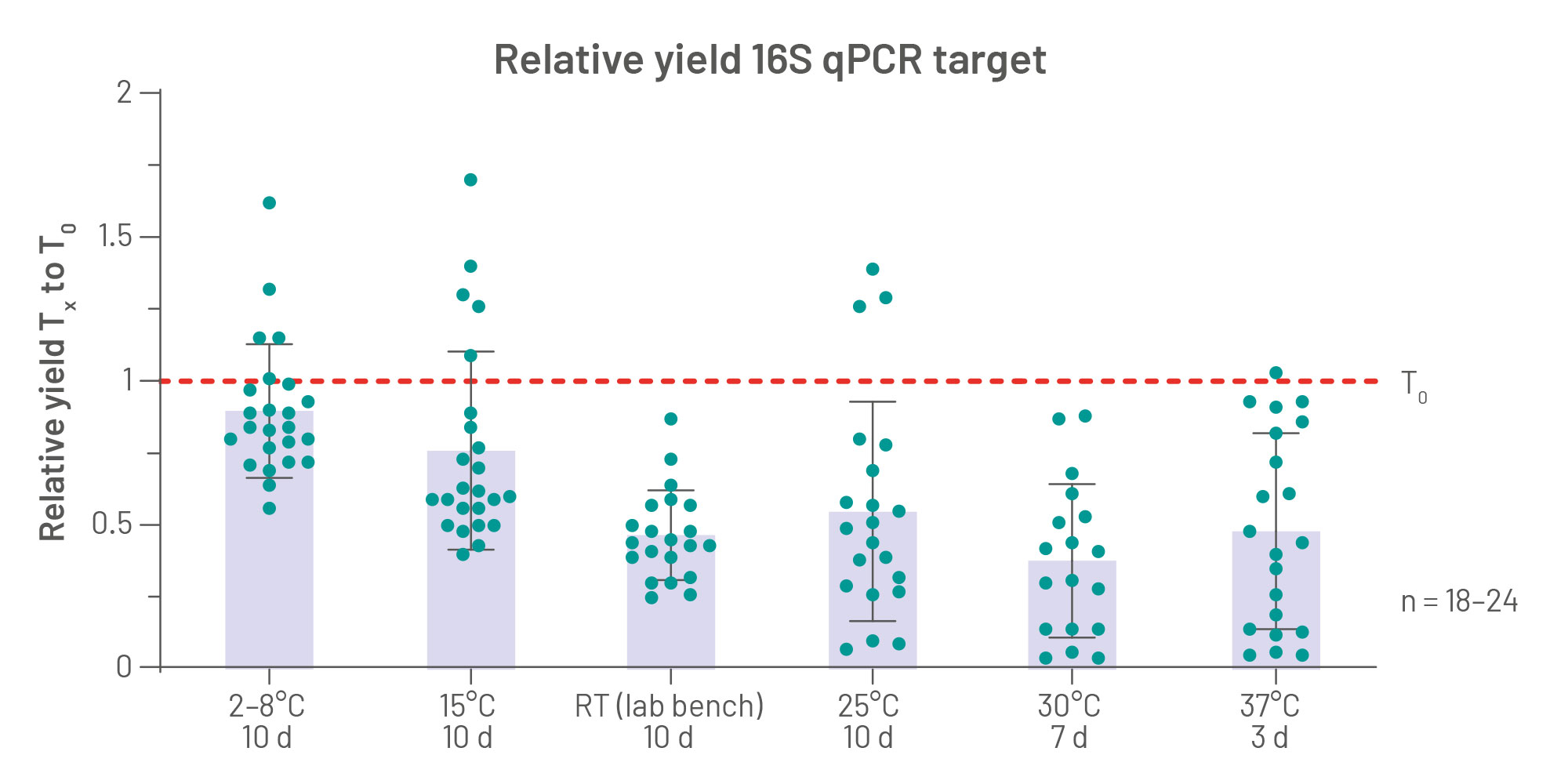Principle
Introduction
Cell-free DNA (cfDNA) in urine is an avenue for liquid biopsy research. In addition to being a standalone source of biomarkers, urine cfDNA has been shown to provide complementary information to blood cfDNA.
However, analysis of urine cfDNA is highly workflow dependent as shown in a research study within the EU consortium EASI Genomics††. The cfDNA profile in unstabilized urine was impacted rapidly by cfDNA degradation post collection (Figure 1A). Furthermore, the cfDNA profile can be diluted by post collection release of genomic DNA from body cells and bacteria.
Reliable urine cfDNA analysis can only be achieved with urine stabilization (Figure 1B) integrated into a complete preanalytical workflow.
The PAXgene Urine Liquid Biopsy Set
The PAXgene Urine Liquid Biopsy Set, which is comprised of the PAXgene Urine Collection Cup and the PAXgene Urine Liquid Biopsy Tube, enables standardized collection and stabilization of urine specimens. Urine cfDNA is stabilized in the PAXgene Urine Liquid Biopsy Tube for various durations at various temperatures and facilitates transport and storage of urine (Figure 2).
The PAXgene Urine Collection Cup is used to collect urine. The evacuated PAXgene Urine Liquid Biopsy Tube is used to sample urine directly from the cup into the tube without the need to open the tube or the cup. Using the PAXgene Urine Liquid Biopsy Set for urine stabilization according to the handbook ensures a consistent ratio of urine to additive (Figure 3).
The stabilized urine is compatible with QIAGEN manual and automated cfDNA isolation technologies. Please see the handbook (see Resources section below) for more details.
The isolated cfDNA eluates are compatible with various downstream technologies (Figure 2).
Performance
The PAXgene Urine Liquid Biopsy Set is part of a complete preanalytical workflow for molecular testing including sample collection and stabilization as well as cfDNA isolation using the QIAGEN QIAamp Circulating Nucleic Acid Kit or the QIAGEN QIAsymphony Circulating DNA Kit (Figure 2). The PAXgene Urine Liquid Biopsy Set allows easy-to-use urine collection in a standard cup and closed sample transfer into a sterile tube minimizing microbial contamination and biospecimen exposure. cfDNA is stabilized by minimization of cfDNA degradation, by minimization of gDNA release and by minimization of bacterial growth over urine storage (Figure 4, 5, 6).
The additive in the tube is non-crosslinking and does not modify biomolecules like cfDNA.
Samples can be transported in a range of environments (e.g., room temperature, refrigerated or frozen (Figure 4, 5, 6). Please see the handbook (see Resources section below) for more details.
Following centrifugation and separation from cellular components, stabilized cfDNA can be isolated from the urine supernatant by manual or automated procedures using the QIAGEN QIAamp Circulating Nucleic Acid Kit or the QIAGEN QIAsymphony Circulating DNA Kit, respectively. The resulting unmodified cfDNA is of high quality (as shown using qPCR) and suitable for various downstream applications. Please see the handbook (see Resources section below) for more details.
Procedure
The PAXgene Urine Collection Cup is a plastic BD Vacutainer® urine collection cup for collection of up to 120 mL of urine. The evacuated PAXgene Urine Liquid Biopsy Tube contains 1.5 mL of additive and is used to sample urine directly from the PAXgene Urine Collection Cup via a needle integrated in the blue cap of the cup. The stopper of the PAXgene Urine Liquid Biopsy Tube is pierced by the needle and the vacuum in the tube enables a flow of 10 mL of urine through a straw in the PAXgene Urine Collection Cup cap.
Directly after urine collection, the unstabilized urine is transferred into the PAXgene Urine Liquid Biopsy Tube for stabilization of urine. This technology allows for convenient and safe collection and stabilization of urine with consistent ratio of urine to additive.
To stabilize more than 10 mL of urine, multiple PAXgene Urine Liquid Biopsy Tubes can be filled from the same cup depending on the total volume of urine collected into the cup.
Applications
Compatible with various assay technologies, e.g., dPCR and qPCR. Please see the handbook (see Resources section below) for more details.
Further downstream applications with urine
See externally conducted research studies from Christian Doppler Laboratory for Liquid Biopsies for Early Detection of Cancer using the PAXgene Liquid Biopsy technology with next-generation sequencing (NGS).













